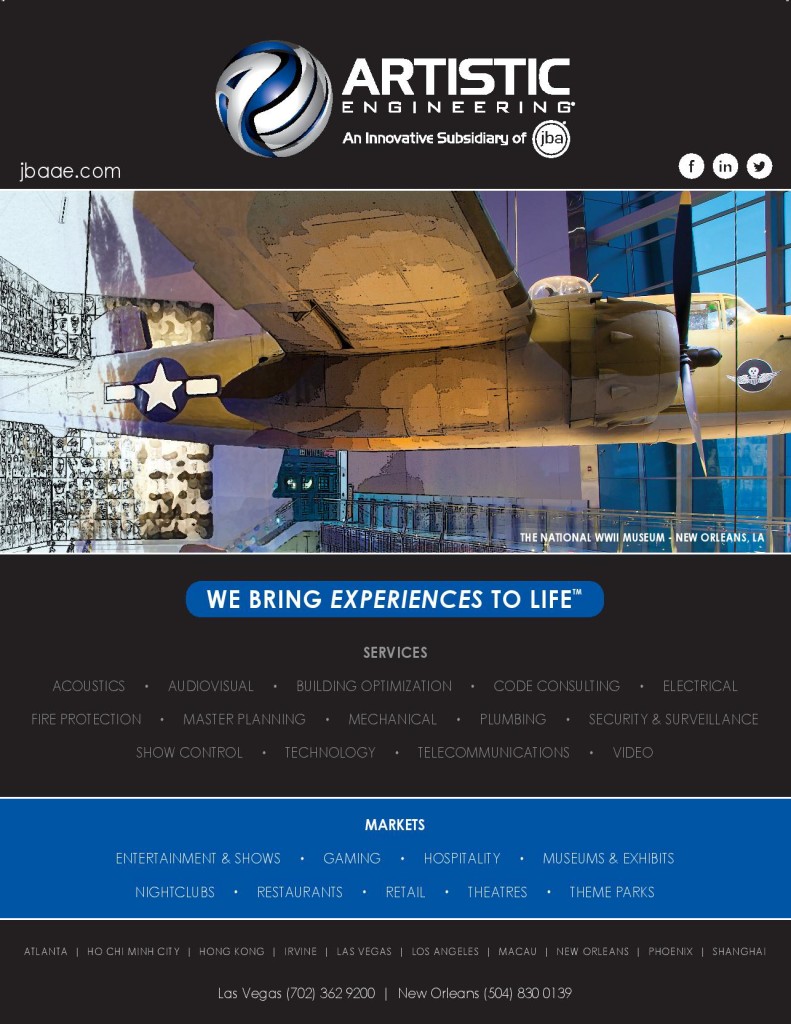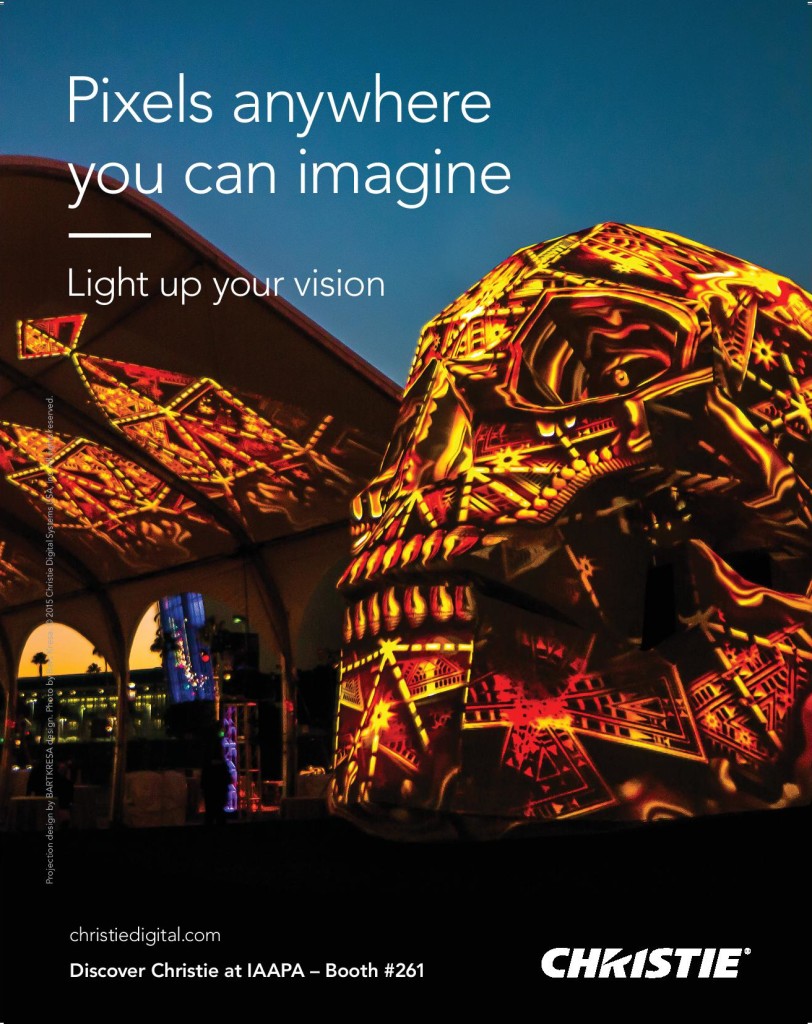ABOVE: Visitors queue for the Eiffel Tower in Paris. Photo ©Alexandre Duret-Lutz, used with permission from the Creative Commons 2.0 Generic license
The future of queue management
by Kevin Dazey
During the infamous Duff Gardens episode of The Simpsons, Bart proclaims, “Hey man if the line is this long it’s gotta be good.” A moment later the gag is revealed: it’s a two-hour wait for guests to register a complaint, only here apparently the employee insults the patrons!
In the real world, we hope a long line does in fact lead to a high quality experience – instead of the above situation – otherwise, something is not right. If you enjoy amusement parks, waiting is inevitable and the benefits usually outweigh the cost. Nevertheless, from entering the park, to food & beverage, to rides, everyone can appreciate shorter or faster moving queues. Delays at the parking tolls or queuing at an entrance can be frustrating without a quick access point, and that’s even before your day at the park has really begun. And those first impressions can linger.
Don Eash, Gateway Ticketing Systems executive vice president and chief operating officer, expresses why entrance slowdowns should be avoided. “Numerous studies have shown that when guests stand in line at the beginning of an experience they are far less likely to have a positive experience throughout the day. So facilities are getting savvy in keeping lines down.”
Not surprisingly, online or mobile ticket sales have been the largest contributor to streamlining the main gate experience, with mobile ticketing likely to take over as the top method for ticket sales, as accesso’s senior vice president of business development, TJ Christensen mentions. “Across our portfolio of clients we see attractions selling between 20 to 40 percent of the total tickets through e-commerce. Of that we’re seeing mobile ticketing represent between 20 to 30 percent of online ticket sales in 2015, suggesting that we are quickly approaching a ‘mobile majority.’”
Admission bought before arrival eliminates the need to purchase on-site, and hopefully also subtracts one potential queue experience from the guest’s day. Holiday World (Santa Claus, Indiana USA) favors this: park president Matt Eckert said, “We make a concerted effort to encourage our guests online by offering the very best discount available if they purchase tickets directly from our website.”
Re-imagining the main gate
With or without turnstiles, staff is still required to assist, and guests must still stop and pause, for some means of validating entry. And in addition to changes that promote functionality and speed, operators have begun to redesign the main gate experience for a more affable welcome. Melinda Arvin, deputy chief sales & marketing of OmniTicket Network explains. “The real advantage to removing turnstiles is that you remove both the physical and psychological barrier that the guest encounters when they arrive. The removal of turnstiles and the barrier promotes a more welcoming and engaging experience at the entry point for the guests.”
Christensen offers a similar viewpoint. “Removing turnstiles isn’t as much about efficiency as it is about enhancing the guest experience. Operators are always looking for new ways to make the arrival experience more welcoming. One way to achieve that is to replace the physical barriers that turnstiles create with personable staff to greet the guests as they arrive.”
These incremental changes ideally all lead towards minimal or no queues at an entrance, improved efficiency, and customers retaining a happy frame of mind to begin their day.
Queuing for rides and retail
Big rides draw big crowds and that tends to mean lengthy waits, especially during a debut season for the latest record breaking roller coaster or innovative dark ride experience. There’s something to be said about building excitement and anticipation, but what is the threshold? How many people are willing to sacrifice most of the day queuing for rides and attractions? Keeping crowds excited about attractions, while minimizing their queue time for the duration of a visit is an operational challenge. Perceived value is likely to go down when only half the attractions are experienced for a once-a-year trip, and guests can’t spend money on games or merchandise when stuck in a 90-minute queue.
Speaking of retail, long lines for food and beverage or other purchases are also wearing on the guest and can leave a bad impression. “You want to get orders in ASAP, expedited and assembled as quickly as possible. The more you can provide self-service, the better,” said Eash. Self-service can speed up the process and give the guest back some measure of control over their time. “This is why some places have you get your own soda. It keeps you distracted while they prepare your order.”
Holiday World has benefited from this method for several years. “One of the benefits of our free, unlimited soft drinks program is the self-serve fountains,” said Eckert. “Thirsty guests don’t have to stand in food lines and hungry guests appreciate not having to wait while other guests’ soft drink orders are filled.”
Tools developed for park staff also contribute to swifter service. Ticketing systems can integrate food, drink, and retail functions. Arvin comments on OmniTicket’s solutions for speedy service. “Our POS system plays an integral role in speeding up transactions in food and drink outlets since it allows the customization of the sales board to facilitate extremely quick sales. The POS screens can be set up to be intuitive and to allow quick and easy training for new staff.”
Improving or shortening the wait
Parks can help the time in line pass more comfortably. Providing shade and cooling are basic. Elaborately themed indoor queues also offer climate control and can be attractions in themselves.Programming shown on in-queue TVs and engaging people via their smartphones can make standing around with 1,000 strangers a bit more tolerable and even promote social interaction. “The strategy is making the in line experience more engaging and interactive so it doesn’t feel like you’re spending time in line,” said Eash. “We’re seeing queue areas getting more extravagant by tying into mobile applications or games like a scavenger hunt.”
Signboards and phone apps offering wait times are newer tools to aid a parkgoer’s day, possibly directing crowd flow to attractions with shorter wait times. Communication about delays or sudden closures is always welcome too.
The use of reduced wait systems has become widespread. Professional sports, concerts, and theaters charge a premium for what’s considered more of a premium experience, so why not at theme and amusement parks too? Perhaps it just took longer to end up here due to origins of pay-per-ride at traditional amusement parks of long ago. These practices have altered queue management as much as anything else recently. Whatever the system may be called, the advertised benefits are the same: spend less time standing in line and enjoy more of your day.
VIP tours exist as well, but those are lower volume and would not have the same constant influence on the regular line. A few early queue management arrangements were no-cost including Disney’s Fast Pass or Cedar Point’s short lived FreeWay and Ticket to Ride. While Disney’s systems have remained free since 1999, front of the line access can come at a hefty price. Many systems have multiple tiers and use dynamic pricing for busier days that can cost more than admission itself. Depending on the system utilized a guest earns the right to either jump in a shortened separate queue to bypass the regular line, or reserve a time for later while experiencing other rides, attractions, or shows.
Virtual queuing
accesso helped pioneer the virtual queue concept with the Qbot handheld device which is now joined by Qband designed for waterparks and Qsmart, which employs a guest’s smartphone. Christensen points out the advantages or virtual queuing versus a front-of-the-line structure. “The beauty of virtual queuing is that striking that balance is much easier compared to ‘front of-the-line’ programs found in many parks,” he said. “The major difference being that, with virtual queuing the guest still waits to ride, just not in line. This allows the guests to ride another ride, shop or dine while they wait for their turn. More importantly this approach allows you to put more guests on the virtual queuing solution and achieve revenue goals that far exceed what a ‘front of-the-line’ pass would yield.”
Guests are obviously willing to take advantage of the service, but this does affect the regular or standby line (how greatly depends on the attraction type and overall capacity). Christensen points out that if too many priority passes are distributed, the benefit is lost for the service purchased. “If you’re not careful, you can overallocate the passes and have a situation where on some rides the ‘premium pass’ guests are waiting as long as your standby guests.”
On the other hand, if too many guests in the standby queue find themselves greatly affected in favor of virtual queue or front-of-the-line riders, multiple guests’ experiences have been simultaneously diminished. Execution is certainly key regardless of the type of system used. Some are much more seamless than others (merge point vs. completely separate entrance).
Holiday World continues to buck the trend by not implementing a front of the line nor virtual queue system. “This is a concept we have continued to consciously not implement,” said Eckert. “As long as we are operating efficiently and safely, we feel that virtual queuing would not fit in with the culture of our parks.” Instead Holiday World relies on its culture of service. “One of our Four Cornerstones is ‘Service’ and our Hosts and Hostesses take this very seriously,” said Eckert. “They are trained and work diligently to keep lines moving, whether that is for an attraction, a game, a gift shop line or a food location.”
A little hustle goes a long way
With or without a reduced wait offering, capacity also undoubtedly plays a role with queue management in such that swifter moving lines mean less overall waiting for everyone. If the overall goal is to make everyone wait less, then operating at a capacity fitting for a given crowd plays a major role in shaping the pace at which lines move. Not every ride can handle 2,000 guests per hour, but reach outputs near maximum theoretical capacity and a difference is noticed.
As a former ride host where meeting daily goals for throughput was expected, and still a very frequent visitor to theme parks, it’s easy for me to notice when operations are not as smooth as they could be. Budget may be the reason when there is a lack of staff or fewer ride vehicles are in operation, but a display of hustle and communication on the part of staff shows awareness of guest needs. That alone can make a huge difference in perception about the park’s interest in keep crowds moving and guests happy. Broader use of single-rider lines and attempts to fill every seat for every cycle may not make huge dents in capacity, but the little things can start to add up when looking for long term permanent solutions – and again, guests will notice and feel better cared for.
Where does it go from here in regard to the longstanding obstruction of more people waiting than attractions can handle? What if you could purchase front-of-the-line access for only a few rides, a la carte? Is this the solution? Eash thinks so. “It’s already happening. We have the technology that allows us to do that through our Galaxy® software today where you can buy an express pass for that one attraction. It could be that you go to a ride and scan a code with your phone. The sales process is now portable to the guest. This is definitely the way things are going. Handheld technology is now an extension of us as individuals and this trend won’t diminish.”
Handheld devices will likely be part of the equation for another interesting model. A few trials have already occurred where the standby line was eliminated leaving reservation-based queuing the sole option. This could well be a sign of things to come if successful. If it means reduced or no waiting and more attractions experienced then it’s a win for operators and guests. As long as attraction and ride designers continue introducing new ways to thrill and entertain, which I think won’t stop anytime soon, then new approaches for reducing queues are around the next turn as well. • • •
Kevin Dazey has a mechanical engineering background and works in R&D at a manufacturing company in St. Louis, MO. His passion for roller coasters and amusement parks began early on while growing up in northeast Ohio near Sea World, Geauga Lake, Cedar Point, and Kennywood. To date, he has visited 41 parks and ridden 235 roller coasters. Besides a fondness for the attractions industry Kevin enjoys maintaining a collection of vintage motorcycles and ATVs. Kevin Dazey is attending the IAAPA Attractions Expo. Email: [email protected]
ADS (click for link):








